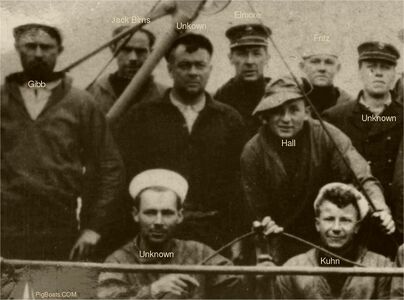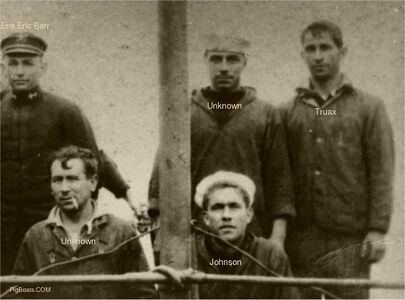E-1
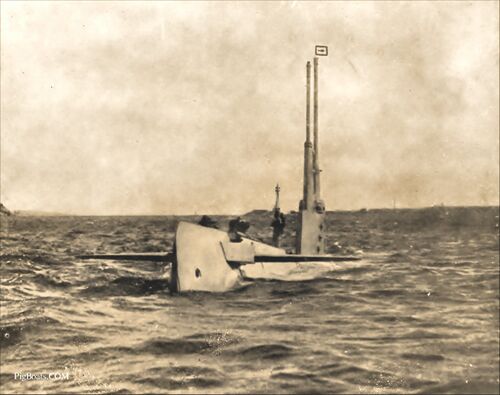
U.S. Navy photo courtesy of Navsource.org

E-1 underway in some chop, probably off Norfolk, VA. in the spring of 1912. Sister boat E-2 is barely visible behind E-1. Note the angular fairings on the bow that cover the pivots points for the new bow planes. The E-class were the first boats built with bow planes.
Photo in the private collection of Ric Hedman
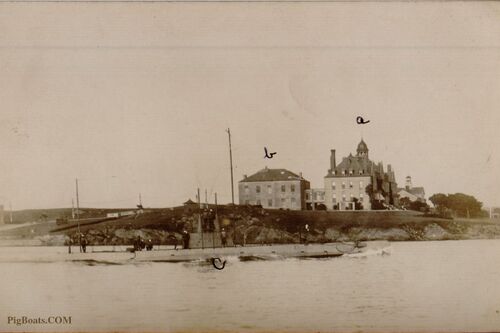
E-1 southbound in Narragansett Bay with the Naval War College in the background circa 1912. The back of this photo contains descriptions of the items in the photo that are labled with letters. "A" is the Naval War College itself. "B" is some sort of meeting hall where "a dance was held". "C" of course is the boat.
Photo in the private collection of Ric Hedman

E-1 participating in the 1912 Naval Review on October 14, 1912 in the Hudson River off New York City. The crew is "manning the rails" as they pass in review with the upper Manhattan skyline in the background.
Library of Congress photo.
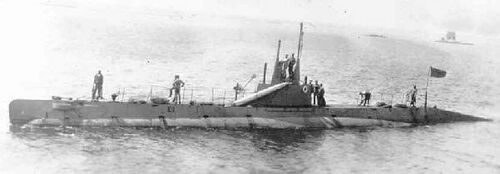
E-1 with a retrieved torpedo preparing to moor, somewhere on the U.S. east coast, circa 1914.
Photo in the private collection of Ric Hedman

This photo was taken shortly after the one above and shows E-1 mooring to a nest of other submarines, circa 1914. The boat preparing to receive her is one of the early K-class submarines.
Photo in the private collection of Ric Hedman

E-1 on a yet to be identified body of water. A few guesses can be made as to the location. The submarine may be off Provincetown, Massachusetts where the Navy kept a measured mile course for trials, but the location may also be Long Island Sound, Narragansett Bay, or Buzzards Bay. It is some place with long and low coastlines with few houses. Midway between the stern and the photos right edge a large square building sits on top of the land horizon. The land extends from side to side in the photo only to disappear behind the point on the left with a few houses. The photo looks to be taken from a ship of some kind. A pulley and davit from that vessel protrude into the photo.
The date is probably sometime between 1912 and 1915. There are corroborating photos showing the same configuration of radio antennas spanning this time frame. E-1 was one of the first subs used in proving this means of communication with submarines even to the extent of being able to receive messages underwater. The masts are held up with a complicated arrangement of stays. The antenna themselves are strung between the mast heads from spreaders.
There are six men topside. Three men forward of the conning tower fairwater, a helmsman on top of the fairwater, and an enlisted man and what looks like an officer on the aft deck. The officer looks to be wearing a long wool bridge coat. The men are in peacoats indicating that the weather is chilly and it could be anytime from fall to spring for the photo to be taken.
Photo in the private collection of Ric Hedman

The crew of the E-1 topside approximately April 1915. There are callouts on the photo giving the names of the men if they are known. They are gathered on the forward deck around the torpedo loading crane.
Photo courtesy of the Submarine Force Library & Museum.
Photos courtesy of the Submarine Force Library & Museum.

E-1 on a high speed run, location unknown, date is approximately 1914-1915. Mooring lines are coiled on deck and the crew appears to be making preparations to moor. This photo gives a good view of the bow planes, which are oval shaped and folded back along the sides of the superstructure. This design would be repeated on the next several classes of submarines that were built to the Electric Boat design.
Photo in the private collection of Ric Hedman

E-1 at Ponta Delgada in the Azores on January 20, 1918. This is one of the very few photos of the E-1 in the war zone in WW I. She was the smallest of the U.S. submarines to deploy overseas. Once reaching the Azores it was discovered that the typical USN peacetime bridge structures made of piping and canvas were woefully inadequate and time consuming to erect and take down. Versions of the chariot bridges used by both Britain and Germany was adopted. The results of that can seen here. All US submarines adopted a version of the chariot bridge in short order. The submarines remaining in the U.S. did not until after the war. One of the men on the bridge is most likely LT Eric Barr, commanding officer of the E-1. Note the intricate camouflage design on the unidentified ship behind.
Photo in the private collection of Ric Hedman
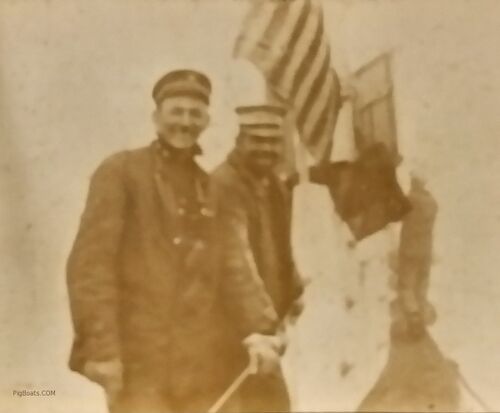
This photo of Lieutenant Eric Barr Sr. is from his personal scrapbook which was donated to the Submarine Force Library & Museum at Groton, Connecticut by his family. He is seen on the after deck of the E-1 with what looks like an officer from a foreign Navy, possibly Portugal. The conning tower fairwater can be seen behind them. A crewman can be seen walking forward on the deck to the right of the fairwater. Photo is circa 1918.
Photo courtesy of the Submarine Force Library & Museum.

The Commanding Officer of the USS E-1 (Submarine No. 24), LT Eric Barr Sr., USN, circa 1917-1918 along with an unidentified shipmate. Barr was a highly regarded officer and an ace sub skipper. His persistence and excellent performance while commanding E-1 and later the K-1 (Submarine No. 32) earned him the Navy Cross, the 2nd highest personal award in the U.S. Navy.
Photo in the private collection of Ric Hedman

An unfortunately lower quality picture of E-1, possibly in the Thames River, Connecticut, after her return from the war zone, 1918-1919.
Photo in the private collection of Ric Hedman
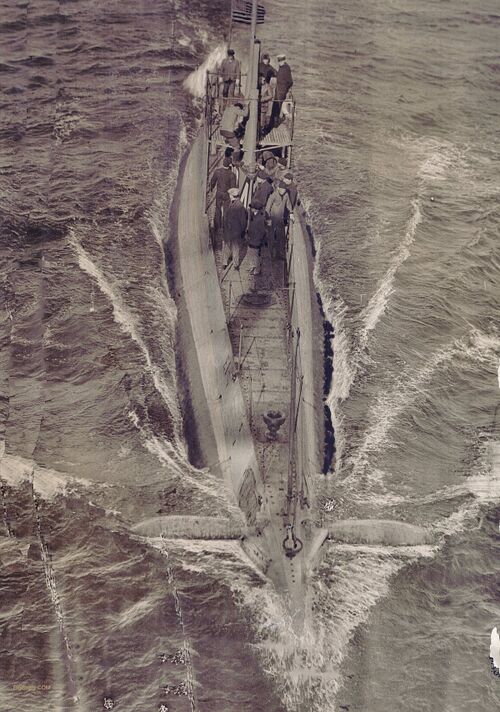
A newspaper photo of E-1 passing under the U.S. Route 1 bridge over the Thames River, Connecticut, approximately 1919. The photo had been heavily retouched for use in a print newspaper. Ric Hedman also did a lot of restoration work on the photo to bring out details. These changes account for some of the blurry areas of the photo.
It would have been unusual for a submarine to have the bow planes rigged out for a surface voyage. They were usually rigged in against the superstructure as soon as the boat surfaced. Why there are rigged out here is unknown.
News service photo in the private collection of Ric Hedman
Page created by:
Ric Hedman & David Johnston
1999 - 2023 - PigBoats.COM©
Mountlake Terrace, WA, Norfolk, VA
webmaster at pigboats dot com

